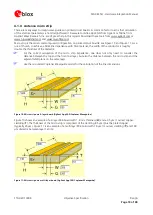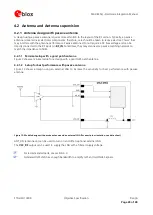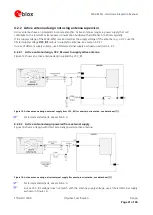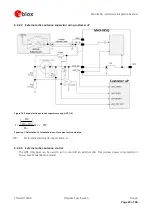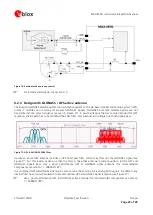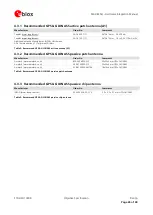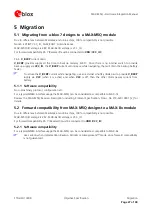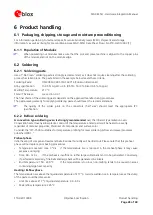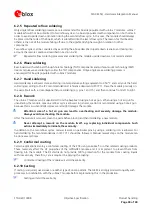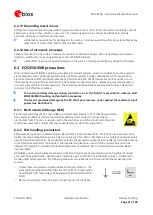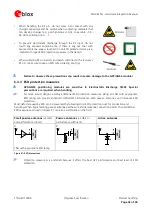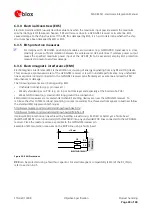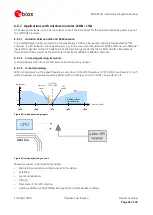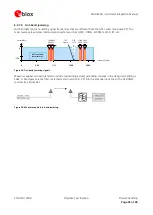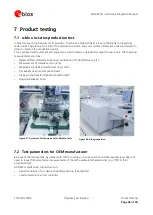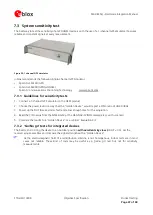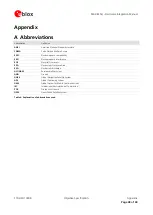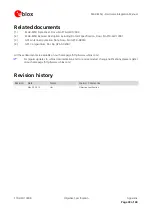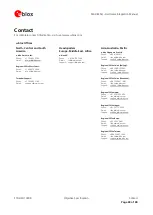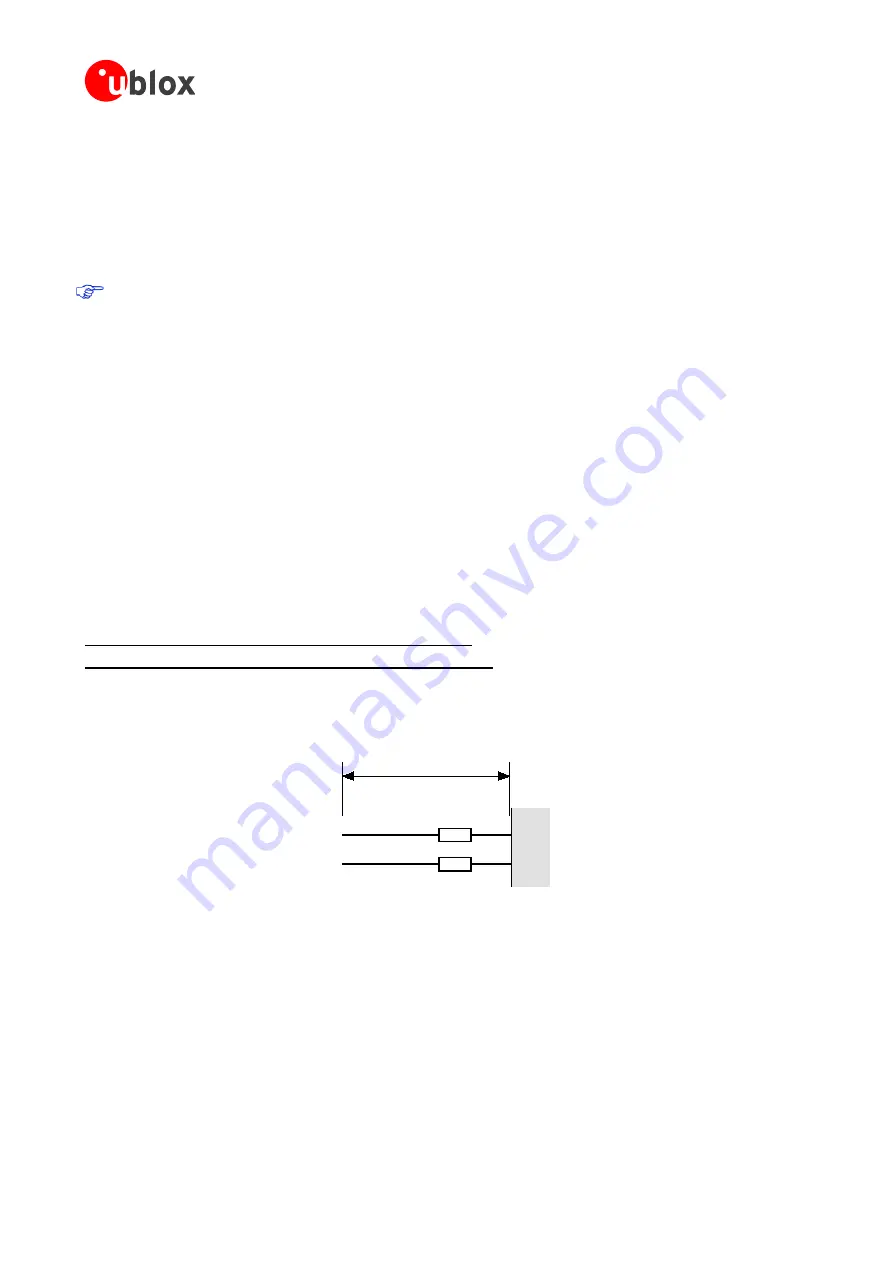
MAX-M5Q - Hardware Integration Manual
FTX-HW-13008
Objective Specification
Product handling
Page 33 of 40
6.3.4
Electrical Overstress (EOS)
Electrical Overstress (EOS) usually describes situations when the maximum input power exceeds the maximum
specified ratings. EOS failure can happen if RF emitters are close to a GPS/GNSS receiver or its antenna. EOS
causes damage to the chip structures. If the RF_IN is damaged by EOS, it is hard to determine whether the chip
structures have been damaged by ESD or EOS.
6.3.5
EOS protection measures
For designs with GPS/GNSS positioning modules and wireless (e.g. GSM/GPRS) transceivers in close
proximity, ensure sufficient isolation between the wireless and GPS antennas. If wireless power output
causes the specified maximum power input at the GPS RF_IN to be exceeded, employ EOS protection
measures to prevent overstress damage.
6.3.6
Electromagnetic interference (EMI)
Electromagnetic interference (EMI) is the addition or coupling of energy originating from any RF emitting device.
This can cause a spontaneous reset of the GPS/GNSS receiver or result in unstable performance. Any unshielded
line or segment (>3mm) connected to the GPS/GNSS receiver can effectively act as antenna and lead to EMI
disturbances or damage.
The following elements are critical regarding EMI:
•
Unshielded connectors (e.g. pin rows etc.)
•
Weakly shielded lines on PCB (e.g. on top or bottom layer and especially at the border of a PCB)
•
Weak GND concept (e.g. small and/or long ground line connections)
EMI protection measures are recommended when RF emitting devices are near the GPS/GNSS receiver. To
minimize the effect of EMI a robust grounding concept is essential. To achieve electromagnetic robustness follow
the standard EMI suppression techniques.
http://www.murata.com/products/emc/knowhow/index.html
http://www.murata.com/products/emc/knowhow/pdf/4to5e.pdf
Improved EMI protection can be achieved by inserting a resistor (e.g. R>20
Ω
) or better yet a ferrite bead
(BLM15HD102SN1) or an inductor (LQG15HS47NJ02) into any unshielded PCB lines connected to the GPS/GNSS
receiver. Place the resistor as close as possible to the GPS/GNSS receiver pin.
Example of EMI protection measures on the RX/TX line using a ferrite bead:
TX
RX
G
P
S
R
ec
ei
ver
FB
FB
BLM15HD102SN1
>10mm
Figure 22: EMI Precautions
VCC
can be protected using a feed thru capacitor. For electromagnetic compatibility (EMC) of the RF_IN pin,
refer to section 6.3.5

